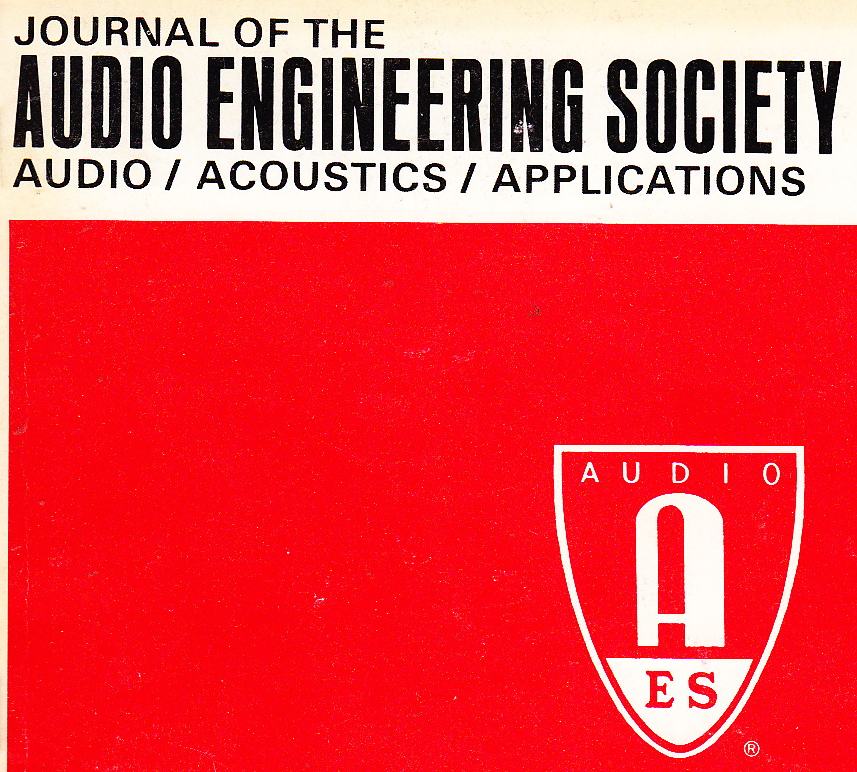 Looking through a selection of Audio Engineering Society journals from 1978, we see several themes repeated. Primarily: digital signal processing (echo and primitive digital reverb) and digital recording. Papers dedicated to various issues concerning digital encoding and playback occupy many of these pages. Digital audio recording was a long way from being widely-accepted as professional practice in 1978, but based on the content of these publications, most in the field seem to have regarded it as inevitable. Most of the content of these issues is excruciating technical, and well beyond the scope of this website; one paper, though, brought light to a forgotten early chapter in the digital audio story.
Looking through a selection of Audio Engineering Society journals from 1978, we see several themes repeated. Primarily: digital signal processing (echo and primitive digital reverb) and digital recording. Papers dedicated to various issues concerning digital encoding and playback occupy many of these pages. Digital audio recording was a long way from being widely-accepted as professional practice in 1978, but based on the content of these publications, most in the field seem to have regarded it as inevitable. Most of the content of these issues is excruciating technical, and well beyond the scope of this website; one paper, though, brought light to a forgotten early chapter in the digital audio story.
***********
*******
***
When I first became involved with music recording in the early 1990s, I often heard vague stories of guys ‘recording digital audio onto VCRs.’ The September 1978 issue of the AES journal finally clarified this all for me. As it turns out, SONY was the first company to bring a digital-audio-recording product to mass-market.
SONY’s PCM-1 (read an excellent period analysis here) was not a digital audio recorder, per se; rather, it was an early D/A and A/D converter which was used in conjunction with an analog video recorder as the data storage device.
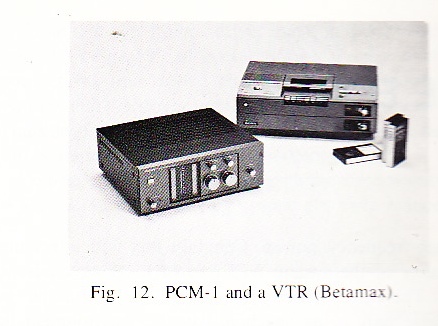 Basically, the PCM-1 converted analog audio to a digital data stream, and then converted this digital stream into a video signal by adding video synchronization data to the digital audio stream. SONY’s engineers chose 44.05k / 16bit as their data spec. This is very close to our modern standard of 44.1 / 16 bit. Not sure why the slight difference. Anyone?
Basically, the PCM-1 converted analog audio to a digital data stream, and then converted this digital stream into a video signal by adding video synchronization data to the digital audio stream. SONY’s engineers chose 44.05k / 16bit as their data spec. This is very close to our modern standard of 44.1 / 16 bit. Not sure why the slight difference. Anyone?
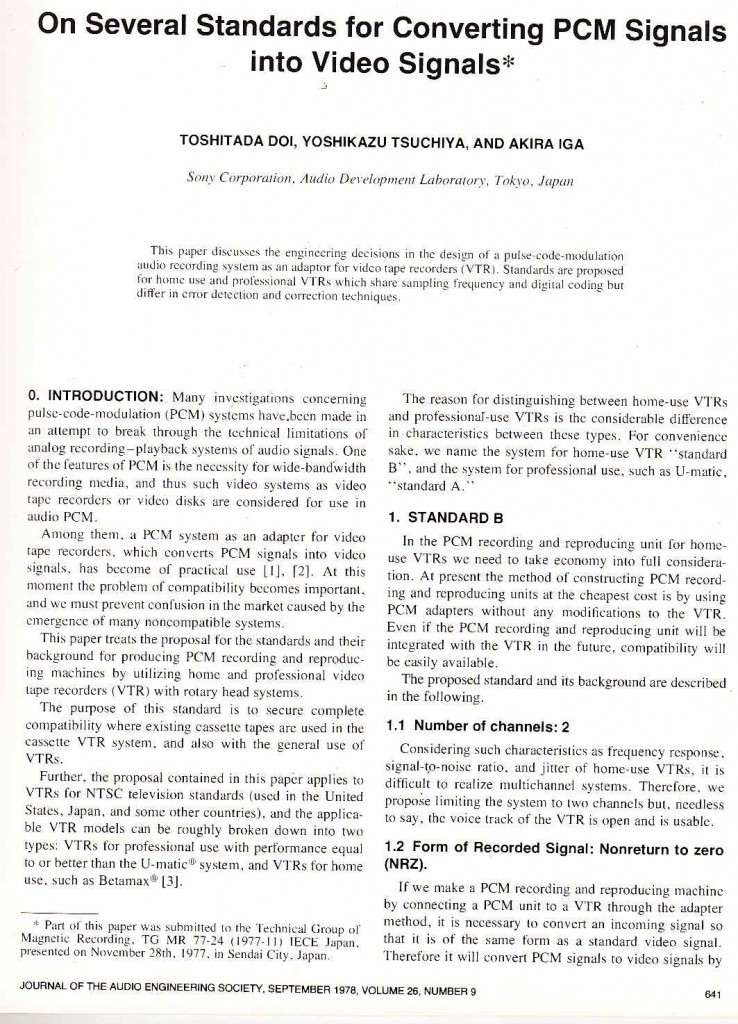
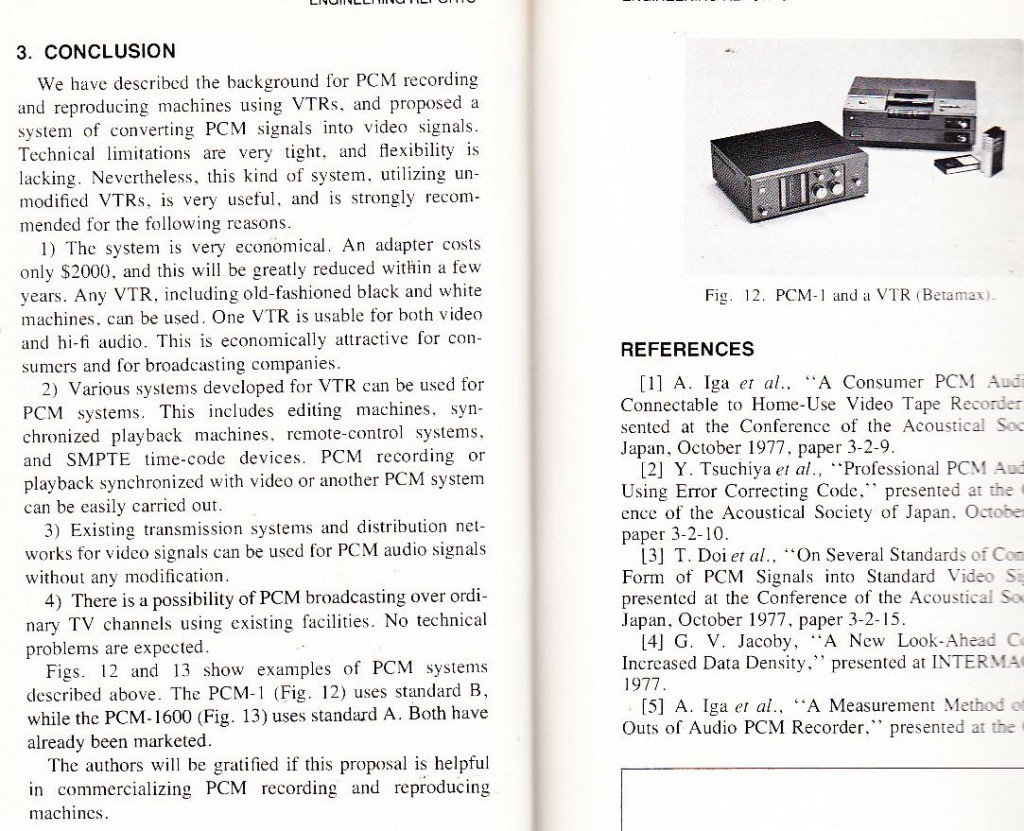 Interesting stuff. A quick web search does not reveal any PCM-1s on the market; I wonder how many were sold in the US.
Interesting stuff. A quick web search does not reveal any PCM-1s on the market; I wonder how many were sold in the US.
Anyone use a PCM-1 or any of the later models? Any thoughts?
Is the digital audio signal from these SONY devices compatible with modern digital audio streams such as AES/EBU or spdif?
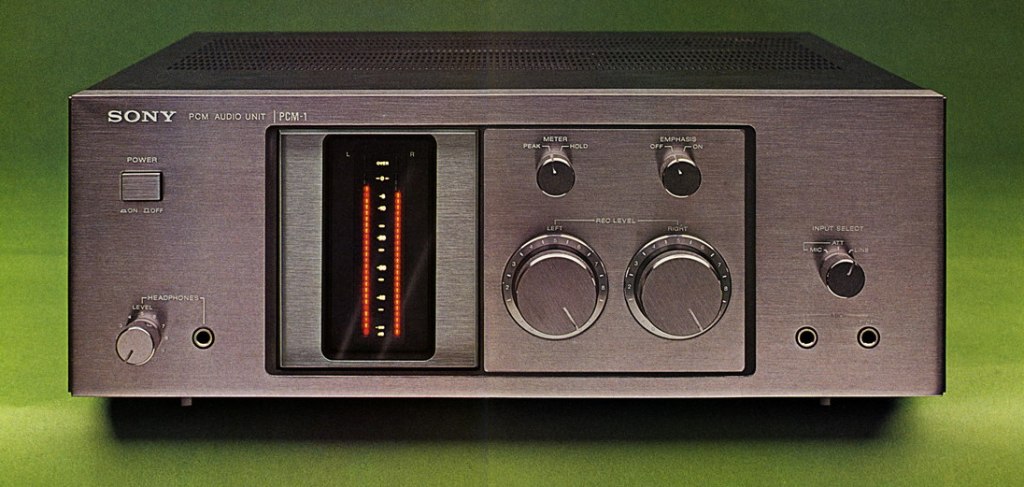
2 replies on “AES Journals of 1978: Digital Audio meets VCR”
Just ran across your article today. I used the SONY PCM-1 for 2 2-day sessions in August and September of 1978 to record the First “ALL” Digital Rock and Roll Album in History. SONY wanted to know just what their machine would do so they lent the first one to us through an old engineer/producer connected with Elvis Presley. My producer/friend, Bill Sullivan (who passed away before 9/11), had awesome connections in the music world of LA and Southern California. My LP, “Live One On the Wire” had more than half a dozen “firsts” at that time and we actually got a retraction from Warner Brothers in Billboard Magazine when they put a sticker on Ry Cooder’s “Bop Till You Drop” album claiming that one as the “Rock’s First All Digital Album” – Cooder’s producer, Lee Hirshburg, was one of the first people we contacted when we finished ours and before he released Cooder’s album. (Cooder’s album used the Soundstream Digital Recorder which was eventually abandoned). Seems I have left a Zero footprint in history. My LP, pressed on “pure” vinyl” and cut at the JVC Cutting Labs by Stan Ricker used several innovations at the time. The LP was originally to be a “demo” but we decided to put it out as an Independent Label release on our label, Oneiric Records. This was the time at which consumers were complaining about record quality. To make a long, long detailed story short, we bit off more than we could chew, so to speak, and have seemingly been relegated to the dustbin of history. This is quite a story of two guys driving around LA doing all the attendant work associated with producing and marketing a record with technology that “no one” had any idea existed, let alone what it was. But, when record company execs heard the sound, most of them freaked — the purity and difference of the sound was unmistakable(Unfortunately I never did find that one person who would guide me through the music industry, but I was once told by Jeffrey Weber, who became Bonnie Raitt’s producer on her breakthrough album, “Nick of Time”, that “there are only five other guys in all of LA who could have done what we did”. Quite a complement. What fun and such a great experience that time was when everything in the Record Industry was changing. And I’ve never even been able to listen to our Master tape recording because the PCM-1 has disappeared as well (although I hear tell that Stevie Wonder bought two of the proto-types and has put them away in his warehouse in Santa Monica, CA (as I recall) with a couple of tons of musical equipment). This story has never been told. I hope you haven’t minded me running through some of the high points in this email. Thanks for reading , , , , Jeff Campbell (now in Oregon enjoying memories and playing a little music).
Hi Jeff. Thanks for this. I tried to find your music on youtube but could not. Can you provide us some link to hear these recordings? Thnx. CR